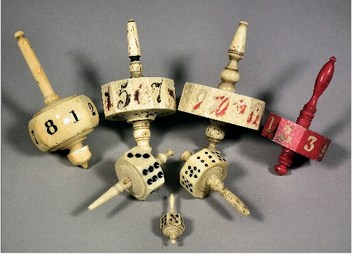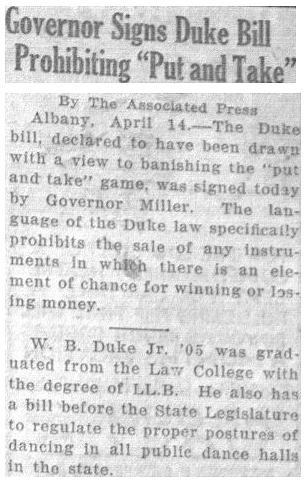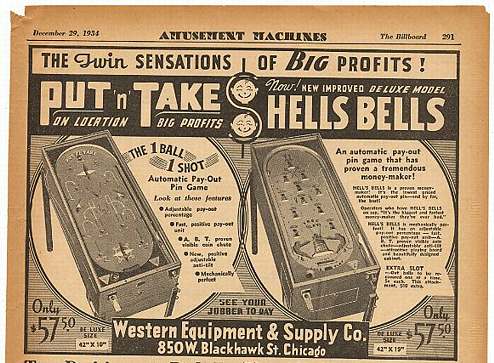100 B.C.
|
 
600 pixels
|
Ancient. "According
to the Oxford English Dictionary, the origin of the game of
"Dreidel" is the "Teetotum" (drawing at the far left), a gambling
top that was known in ancient Greece and the Hashemonean kingdom [the
ruling dynasty of Kingdom of Judah and surrounding regions during classical
antiquity, c. 140 and c. 116 BCE]. David Parlett, The Oxford History
of Board Games, 1999, pages 29-30, states that the Teetotum was originally
a cubic die threaded on a spindle so that only one of its sides where
capable of showing after it was spun." Source: Virtual
Museum of Games.
The picture to the right is from an auction in March 2012.
|
1500's
|

|
Dreidel. In Germany
in the 16th century, under the name "Kreisel" (to spin), the Dreidel
evolved as a device to be used during the Hanukkah Festival - the
Jewish festival commemorating the event that happened in Jerusalem
in the year 165 BC. Source: Waterloo.
Here
are artistic/fanciful depictions of dreidels. Note the one made out
of a bullet.
|
1560
|
 
|
Teetotum.
A girl holding up a four-sided teetotum on Pieter Brueghel's
painting "Children's Games" (1560). Source: Wikipedia.
The girl holding the teetotum is at the lower
left (see the arrow) in the painting.
|
1738
|

|
"Child with a Teetotum" (1738).
Giclee Print
by Jean-Baptiste Simeon Chardin.
A Child with a Teetotum
Author : JEAN-BAPTISTE-SIMEON CHARDIN
Date :1738
Technique :Oil on canvas, 67 x 76 cm
Type :portrait
Form :painting
Location :Mus?e du Louvre, Paris
|
c.
1800
|

|
Put and Take. Earliest
Put and Take I know of -- pictured here -- 18th-19th century,
per auction house. I thank Marianne Jager, of the Netherlands,
for the picture of her ancient Put and Take spinner and the following
informatrion. She says, "In the Netherlands 18th �19th century they
made spinners from silver, like in the picture. The letters and text are
old Dutch. Lengh 3.2 cm, weight 6.8 gram
"The letters on each of the 6 sides:
A - only take
B - to pay
N - nothing to take
T - take
D - double put
S � put."
She adds, "The letters on the sides are difficult
to read, old fashioned Dutch," so she is giving an approximate
translation. "Anyway, the letters stand for put and take, inclusive:
nothing (spin again?) and double.... , like the spinners we all
know. That much is for sure."
|
1920-
1940
|

|
Patents. Click here to see five
U.S. patents that were filed and issued for Put and Takes between
1920 and 1940.
|
1921
|

|
Movie. There was a "Put
and Take" silent movie in 1921.
To the left is a glass slide, used in the theaters to advertise "coming
attractions." It is an advertisement for that same upcoming Percy and Ferdie
"Put and Take" 1921 Hollywood movie (actually a "comedy short") featuring Sid
Smith produced by the Hallroom Boys Photoplay Inc., A Federated Exchanges Release.
Note that there is a white object on the table, pointed to via my red arrow. It is a Put & Take top!
|
1921
|

|
June 29, 1921 Naugatuck, [Connecticut,] Daily
News. Menace and craze of Put & Take has not reached Naugatuck
yet.
Read full article here.
Highlights of the article"
� no gambling arrests here yet for gambling "Chicago tops," also
known as "Put & Take" tops.
� the "Put & Take" "craze � seems to be sweeping the country."
Some places have gone "loony" with the game. Tops are being sold "by
the thousand."
� local high school students have returned from New York with such
tops.
� the tops can be "fixed" just as dice have been here. "A small
manicure file" is used to shave certain sides to fix the tops.
� the police will arrest those caught playing "Put & Take."
|
1921
|

|
Oct. 21, 1921 New York Times
article on Put & Take menace. The New York Woman's Christian
Temperance Union voted to "condemn" the spinners as "gambling."
|
1921
|

|
Article. A full
page in the Dec. 10, 1921, Illustrated London News -- picture and
article entitled "PUT AND TAKE CRAZE : A SUBSITUTE FOR PITCH AND
TOSS."
(Pitch and Toss: "Any number of players line up a fixed
distance away from a wall. The players each take a coin of common
denomination and take turns tossing them towards the wall. The objective
is to toss the coins such that they land as close to the wall as possible.
Some forms of Pitch and Toss require the coin to hit the wall to be a
valid throw.
"In most variations this is a gambling game, with the
winner collecting all the losing players' coins from the ground.
Other variations include the game ending in "tips", where the player
whose coin lands closest to the wall collects all of the coins and flicks
them all into the air. Before the coins land, the player would shout
"heads" or "tails" and be entitled to claim those coins landing the corresponding
way. The remaining coins (if any) would then be gathered by the player
whose coin landed second closest to the wall, who would repeat the tossing
and calling of heads or tails. This process would continue until all
the coins have been picked up."
[Lots of other rules if a coin lands at an angle against
the wall, hits another coin, rolls after landing, etc.] Source:
Wikipedia.
)
You might enjoy these links:
� typed text
of the bottom of this Illustrated London News page.
� enlargement
of the text at the bottom of that page.
|
1921
|

|
"Ripley's Believe or Not" December
14, 1921 newspaper column and drawing had some wrong historical
information, but said, "Of course you play that new game of the spinning
top called Put and Take? It is the newest and latest craze
to tempt our gambling instinct, and is all the rage all over the country.
Well, you will be surprised to know that it is one of the very
oldest games in the world." Click here
for larger picture of the "cartoon."
Here is the text
of the article.
|
1921
|

|
Sheet Music. Wonderful
Put and Take theme on a sheet music cover, on eBay August 2009,
bid up to $106.00. I don't own it, came in second. "Sheet music.
PUT AND TAKE is a song about gambling away his money playing Put and
Take. Copyright 1921. 1/2" tear through all pages top left (in the
"U"). Light fold in the center. Six pages."
|
1921
|

|
1921 One-Step. Composition by George Linus Cobb
(1886-1942), American rag composer and Tin Pan Alley songwriter. Click
here
to see the entire composition. Click here to hear it!
""Put and Take" appears to celebrate that same-named ancient gambling spun
dice game once played at home, in pubs or at social gatherings around the
world. ... Although a little long, it may be interpreted as a descriptive
composition reflecting the various aspects of the gaming with the dice/spinning
tops in particular, placing the stakes, spinning the dice and finally winning
or losing. Please take your pick!
Put and Take was published in Melody by Walter Jacobs, Boston, Massachusetts,
USA."
|
1922
|

|
NYS Duke law outlaws Put & Takes, April
14, 1922. Governor Nathan L. Miller signed the law designed to banish
Put & Takes by specifically prohibiting the sale of any instruments in
which there is an element of chance for winning or losing money.
(Article from The Cornell [New York] Daily Sun, April 15, 1922.)
Thanks to Marianne Jager for locating this and the other news articles
on this page.
|
1922
|

|
Advertisement (May 13, 1922) for Put and Take
tops in New Zealand paper, "NZ Truth." 1921 and 1922 seem to be big years
for the "craze," the term used here and elsewhere. Note that the ad
says 25 million of the tops were sold in "America." (Thanks to Marianne Jager
for finding this ad and other items on these pages.)
|
1922
|

|
South Australian Christian Endeavour Union
demands that Put & Take game be criminalized. June 1, 1922, The
Mercury (Hobart, Tasmania, Australia, June 1, 1922), p. 6.
The Union denounces the "craze." The article is quoted
in full below:
"That harmless-looking little piece of metal, which has set Hobart, Australia,
as well as other parts of the Commonwealth on a gambling craze, "Put-and-Take,"
is destined before very long to have prohibition applied to
it by legislative enactment. In Hobart it has ousted cigarette-card throwing
amongst the small fry, and it seriously threatens the "two-up" schools and
even ladies' bridge parties. They are beginning to grip "Put-and Take" in
South Australia, where, at a recent meeting of the Adelaide executive of
the South Australian Christian Endeavour Union, a discussion on its evil
influences brought from one speaker the remark that he had been credibly informed
that a man had lost �60 in a few minutes. The game was played with
a little metal spinning top. The side of the top which falls upwards indicates
whether the player has to put or take.. The Rev. J. E. Creswell moved the
following resolution, which was carried unanimously: "That this union, being
of opinion that the game known as "Put-and-Take" is an insidious and dangerous
form of gambling, requests the Attorney-General to obtain an opinion from
the Crown Law Department on whether the game should be put under the present
provisions of the Lottery and Gaming Act, and, if,not, that he take the necessary,
action to have that done at the earliest moment; we also urge endeavours
to discourage in every way in their power the playing of the game." "
|
1922
|

|
"Put and Take," (1922; composer, Silberman;
Conductor, G W Byng) delightful Music Hall-type ditty -- lyrics and instrumentals
-- sung by Harry Fay. You can hear it on YouTube here.
"Put and take, put and take, put and take, what a funny little game is
put and take. First you lose, then you win; that's the time when you GRIN,
then you have another little spin... .. Yes, that is the game that keeps
you wide awake. What a game, never fails, all the convicts in the
jail, they all play put and take" -- words from the song. You can
read all the words to the complete song here.
Ubiquitous recording artist, Harry Fay made hundreds of records, mainly
for Zonophone, Cinch, Parlophone and Imperial labels.
|
1922
|

|
Fanciful story of the "inventor" of the
Put and Take top. Maybe Pollard and his Birmingham, England,
foundry were famous in manufacturing the tops in 1922, and the story grew
as to him inventing them.
Click
here to see an enlarged picture. Note the names on the sides
of the tops at the top of the page.
Source: Excerpts from the Daily Express Newspaper as published in
1938 in book form. More specifically: "These Tremendous Years: 1919-1938."
A Daily Express Publication, London and Northampton, 1938, p. 42.
|
1922
|

|
Movie lobby card. This
is the only movie lobby card I know of that shows a put and take,
and two are shown on the lobby card! It is from the 1922 silent
film, "Forsaking All Others."
Click here
to see close up of the Put & Takes. Nothing can be read from
the lower left (white) put and take, but the upper right one's two
sides can be read. You can read them too if you look close --
"TAKE ALL" and "PUT 3."
|
1929
|

|
"Put and Take" jazz-swing musical
composition.
Wow, click here
to hear this YouTube jazz-gypsy swing sound composition
by Joe Venuti's Blue Four's group: "Put and Take" (1929),
Eddie Lang on the guitar. It is tune #4, side 2, on the record
label pictured to the left.
It is on Volume 7 of the Odeon Swing Music Series.
You may buy "Put And Take" on Google Play, iTunes, eMusic,
and AmazonMP3.
|
1931
|

|
"Put and Take" coin-op trade
stimulator by W. C. Steel Ball Table Co., 1931. Source.
The top of the machine says "Test Your
Skill For." That is just an attempt to call it a non-gambling
game, which would be illegal in most places at that time.
Uner that, in a circle, is the name of the game: "Put
& Take." Below that is, "Insert penny. Push down
on lever and release." There are 8 sections on the large
dial. I can make out these sections: Take All (with star),
P1, T3, P2, All Put, T2.... . It looks like there are beads
on a wire, below -- to keep score? I see there is no auctomatic
coin payout. Not sure how it would work.
|
1934
|

|
"Put 'n' Take" pinball machine. 1934
advertisement. $57.50 for de luxe size: 42" x 10." Says:
1 Ball, 1 Shot. ... Automatic Pay-Out ... Adjustable pay-out percentage
... anti-tilt," etc.
|
1938
|

|
N. Shure Co., Chicago, 1938
catalog page.
Offering Put and Take punch boards.
|
1956
|

|
Game by W. H.
Schaper Mfg. Co. Inc., Minneapolis 11, Minn, copyright 1956. ...
... .. About 9 x 11 x 3".
|

























